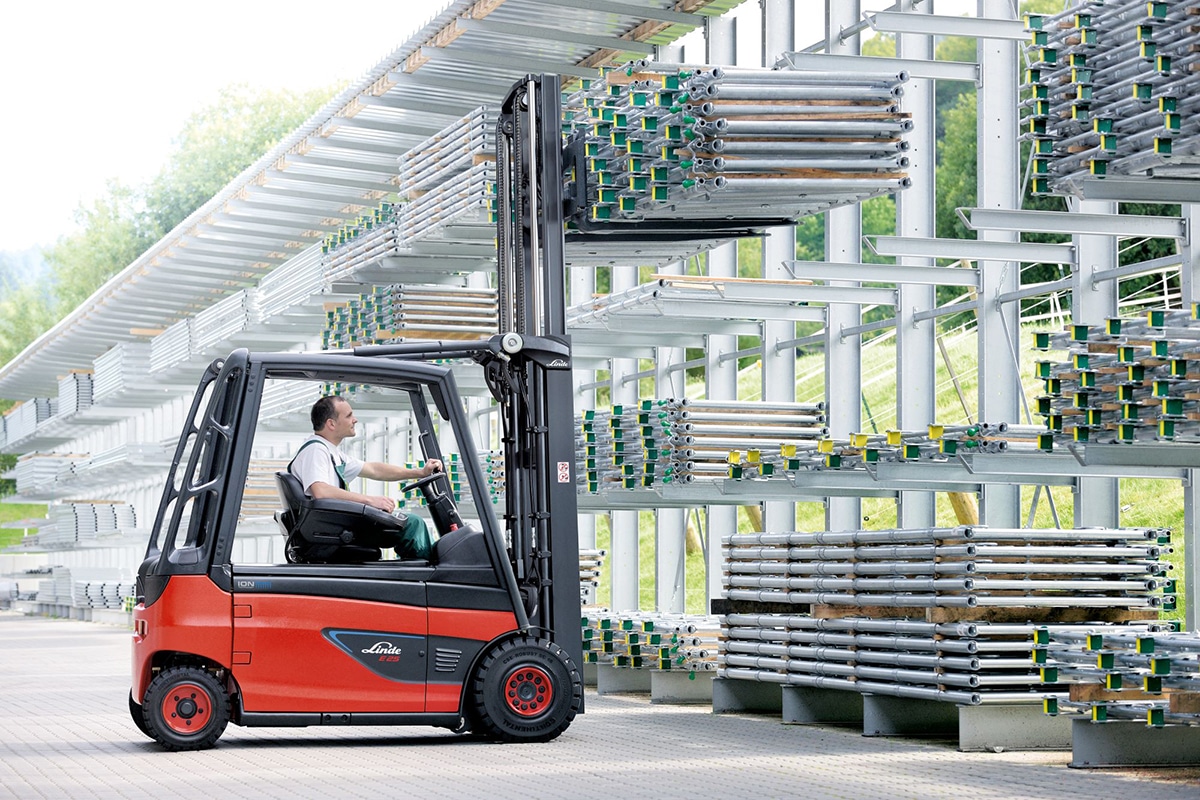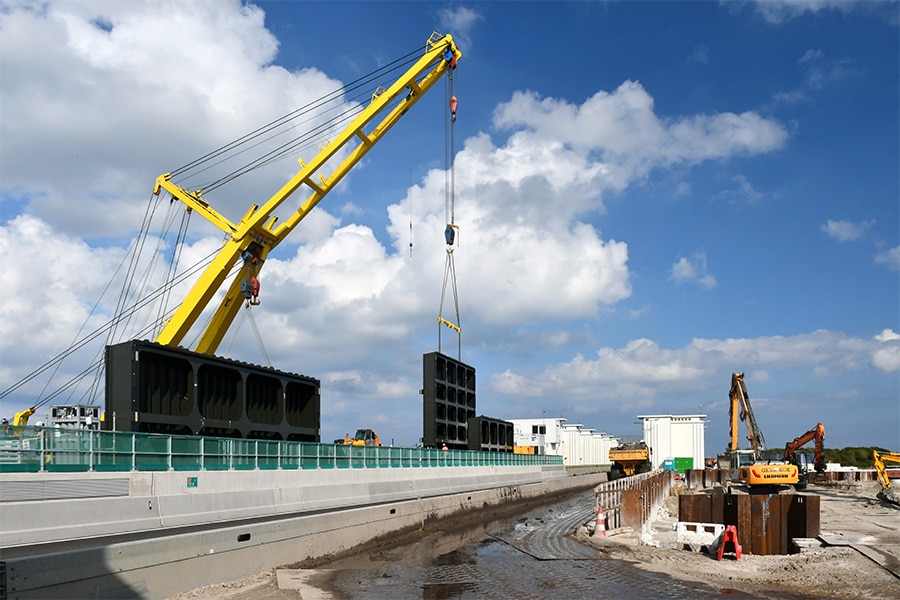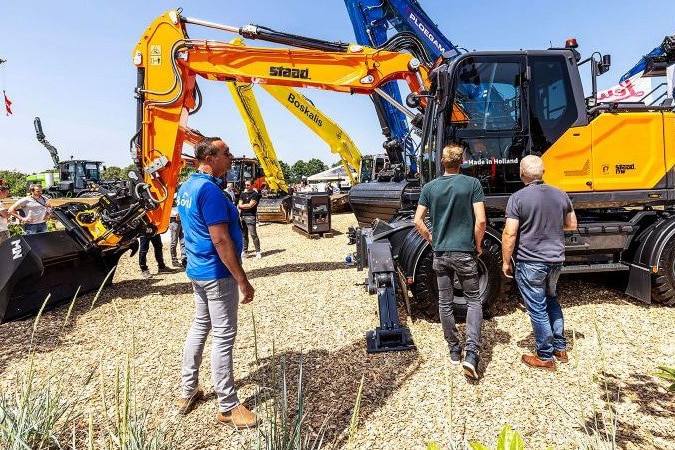
Concrete, steel and lots of sand at the New Lock
A quick update on the state of affairs in Terneuzen
It's been a while since we brought you an update on the work on the New Lock in Terneuzen. Joris de Maat, soil, environment and permits consultant at the Flemish-Dutch Scheldt Commission (VNSC) and Peter Van den bossche, permits and soil flows specialist at contractor combination Sassevaart, update us on progress and focus together on a specific part: soil flows.


Middle lock demolition and arrival of service jetty
"On Oct. 1, 2021, the demolition of the southern part of the Middle Lock began," Joris opens the conversation. By now, the bridges and lock gates have been removed and a lot of soil has been excavated. The demolition ran and is running smoothly and will soon continue with the thick quay walls." In late November 2021, the service jetty was delivered for use in the service port. Joris: "The floating jetty is 101.5 meters long and 12 meters wide. Therefore, it was sailed to Terneuzen via the Westerschelde, with the help of two tugs and then installed on site."

Raising lock plateau and primary flood barrier
Late last year, trailing suction hopper dredger TSHD Middelburg brought about 5,000 cubic meters of sand to the cofferdam in the service port. Peter: "With the sand brought in, we started work in January. We have been driving sand from the service port to the lock platform of the Nieuwe Sluis and the primary dam since mid-January (outside of rush hour). We have now cleared the first loads. We sweep the road on a regular basis to prevent sand nuisance on the road. In the coming years we will additionally carry additional sand."
Soil streams
Peter continues: "Ground flows must take into account different stakeholders. Joris adds: "The sand delivered to the service port is taken from the North Sea and is intended for raising the lock plateaus next to the lock. We need about six meters of embankment there. There will then be a layer of topsoil over that and the new road." Peter: "That all has to be properly compacted for the future functions." In total, Joris and Peter are talking about 12.5 million cubic meters of earth moving. "Partly the soil will be reused," Joris explains. "There is a lot of removal of less suitable civil engineering soil, for example, 4.2 million cubic meters of soil will be applied in the Westerschelde, as part of the flood protection plan. 2.5 million cubic meters of sand will eventually go to Knokke, as foreshore replenishment."
We have yet to excavate the headlands in line with the New Lock. "We look very carefully at what soil/sand is released, as the final destination for it requires certain specifications," Peter explains. "For example, Knokke does not wish to receive clayey soil nor fine sand. The beneficial application of soil in the Westerschelde must also meet several conditions. Of course, sand is also released that cannot be directly reused within the project. A special working area has been set up to store this sand, in order to investigate where it can be used at a later date. Maintenance sludge is also released from our annual dredging task, with a maximum volume of one million cubic meters per year. This is clean material and suitable for spreading in the Westerschelde."
Ground Flow Plan
The contract required contractor combination Sassevaart to provide a soil flow plan. Peter: "We were given requirements and conditions that the soil had to meet. In the soil flow plan we included everything: type of soil, the quality of the soil, the necessary permits, what timing are we talking about and what volumes are involved."
The status of soil flows is that Sassevaart is now on half of the 4.2 million cubic meters of soil to be applied in the Westerschelde.



